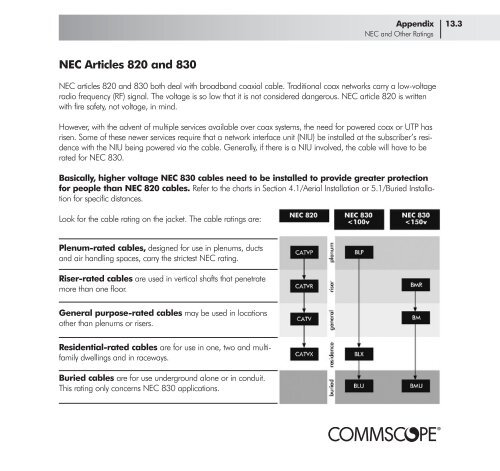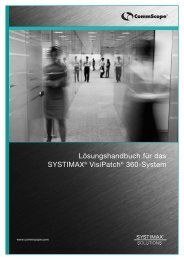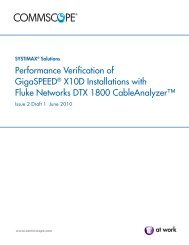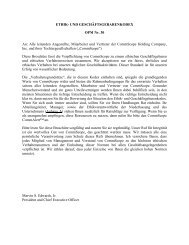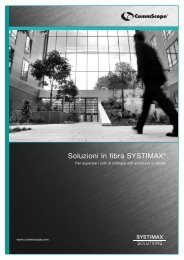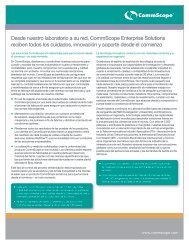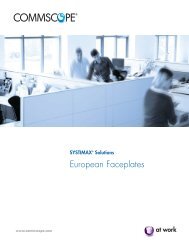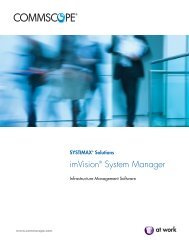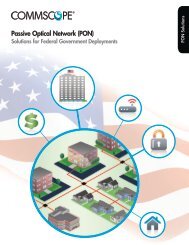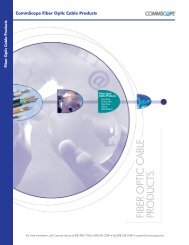Broadband Applications & Construction Manual - Public - CommScope
Broadband Applications & Construction Manual - Public - CommScope
Broadband Applications & Construction Manual - Public - CommScope
You also want an ePaper? Increase the reach of your titles
YUMPU automatically turns print PDFs into web optimized ePapers that Google loves.
NEC Articles 820 and 830<br />
NEC articles 820 and 830 both deal with broadband coaxial cable. Traditional coax networks carry a low-voltage<br />
radio frequency (RF) signal. The voltage is so low that it is not considered dangerous. NEC article 820 is written<br />
with fire safety, not voltage, in mind.<br />
However, with the advent of multiple services available over coax systems, the need for powered coax or UTP has<br />
risen. Some of these newer services require that a network interface unit (NIU) be installed at the subscriber’s residence<br />
with the NIU being powered via the cable. Generally, if there is a NIU involved, the cable will have to be<br />
rated for NEC 830.<br />
Basically, higher voltage NEC 830 cables need to be installed to provide greater protection<br />
for people than NEC 820 cables. Refer to the charts in Section 4.1/Aerial Installation or 5.1/Buried Installation<br />
for specific distances.<br />
Look for the cable rating on the jacket. The cable ratings are:<br />
Plenum-rated cables, designed for use in plenums, ducts<br />
and air handling spaces, carry the strictest NEC rating.<br />
Riser-rated cables are used in vertical shafts that penetrate<br />
more than one floor.<br />
General purpose-rated cables may be used in locations<br />
other than plenums or risers.<br />
Residential-rated cables are for use in one, two and multifamily<br />
dwellings and in raceways.<br />
Buried cables are for use underground alone or in conduit.<br />
This rating only concerns NEC 830 applications.<br />
Appendix 13.3<br />
NEC and Other Ratings


